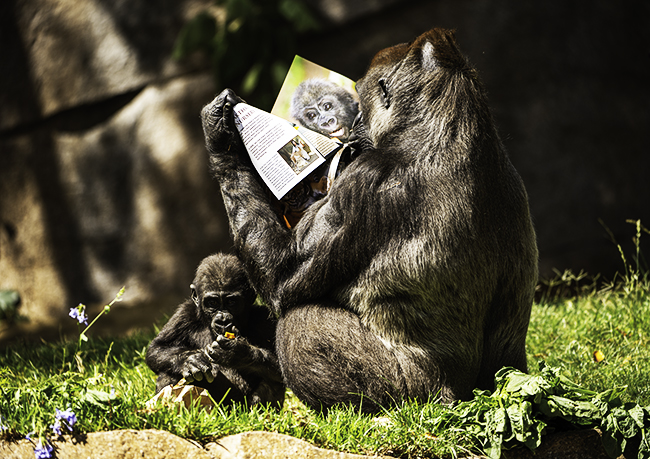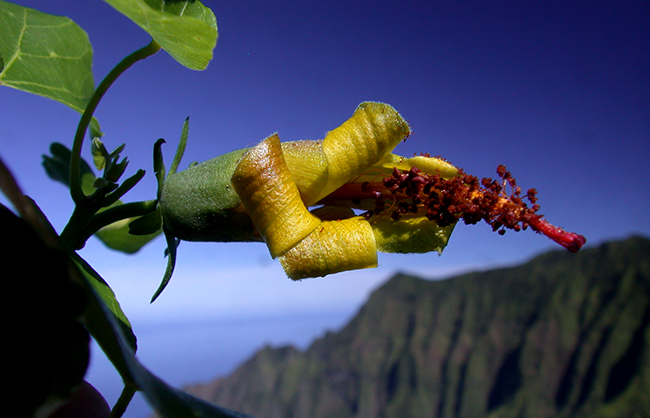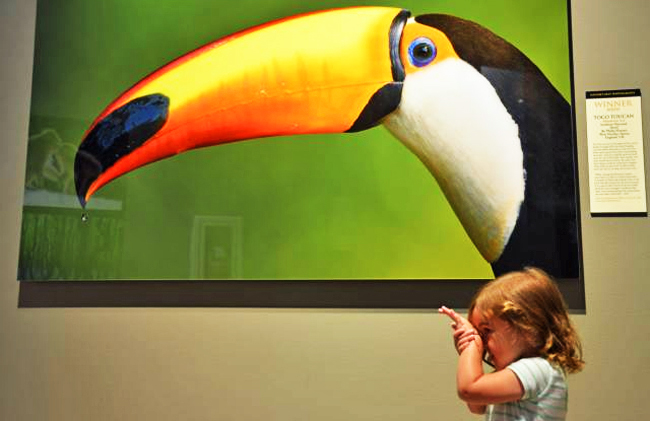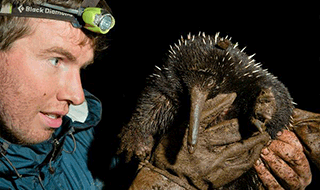| VIEW THIS EMAIL IN YOUR BROWSER > |
 |
 |
|
 |

The endangered Western Lowland Gorilla & Baby, photo by Laurie Rubin, San Diego, California. From the exhibition, Nature’s Best Photography. |
In the Museum
|
On the Web |
Nature's Best Photography: Windland Smith Rice International Awards
Forty-eight award-winning, large-format prints take you on a photographic journey from the wild to the walls of the Smithsonian.
Read More >
|
Nature's Best Photography Gallery
View the Nature’s Best winning photographs in this online gallery.
Read More >
|

This exhibition celebrates the tenth anniversary of researchers producing the first complete human genome sequence — the genetic blueprint of the human body.
Read More > |

Explore the exhibition online, find resources for teachers and students, and learn more about the Human Genome Project.
Read More > |
| MORE EXHIBITS > |
 |

| Hibiscadelphus woodii by K.R. Wood |
|
 |
Are There Any Left of This Rare Plant? |
|
 |
What is Killing the Tasmanian Devil? |
|
Loss of habitat in the Hawaiian Islands leads botanists to consider whether the plant Hibiscadelphus woodii is endangered or extinct. Only four individuals of the original population have been found.
Read More >
Read about the 2013 Smithsonian Botanical Symposium on Avoiding Extinction >
What does it mean to be an endangered species? > |
The symbol of the island of Tasmania and the world’s largest marsupial is now endangered. Smithsonian zoologist Kristofer Helgen is investigating a disease that may be the cause of a major decline (over 80%) in the Tasmanian devil population.
Read More >
Smithsonian Science >
The Tasmanian Devil Genome Project > |
 |
Evidence of Recent Human Impact to Oceanic Food Webs |
|
 |
The Long-Beaked Echidna: Extinct in Australia … or Not? |
|
Using ancient DNA from bones and museum specimens, researchers traced the population history of an endangered species of oceanic seabird, reconstructing its foraging habits during the past 4000 years. What caused the recent marked change in the diet of these predatory oceanic birds?
Read More >
|
A visit to a storage cabinet at the Natural History Museum in London leads a Smithsonian zoologist to question whether one of the world’s five egg-laying species of mammal, the western long-beaked echidna, may still exist in Australia, where it was thought to have become extinct thousands of years ago.
Read More > |
| MORE RESEARCH > |
 |
 |
| The Genome Zone |
Smithsonian Sleepovers |
The Genome Zone is an exciting interactive space adjacent to the exhibition, Genome: Unlocking Life’s Code. Join us Saturdays and Sundays from 1-4pm for “Genome Geeks” and Thursdays from 1-4pm for “The Scientist Is In” in the Genome Zone.
Learn More > |
For lucky kids and their adult companions, the wonders of one of the world’s most famous museums are all theirs to explore during a night of adventure at the Museum of Natural History.
Learn More > |
| Live Butterfly Pavilion |
NOW @ IMAX |
Take a stroll among hundreds of live butterflies and exotic plants in the Butterfly Pavilion.
Learn More > |
View complete show times for the Johnson IMAX Theater > |
| MORE EVENTS > |
 |
 |
HELP US REACH 10,000!
We have one more month to reach 10,000 photos of visitors enjoying the Smithsonian. For every photo added to our site, Ford Motor Company Fund will donate $5 - up to $50,000! Just over 4,000 photos are on the site already - help us reach our goal by adding your favorite Smithsonian memories to America’s Family Album today!
Don’t forget to tell your friends on Facebook and Twitter. |
| Volunteer Opportunities |
Support the Museum |
Learn about the exciting opportunities to volunteer in Q?rius, Natural History’s new state-of-the-art facility that’s part lab, part collections vault and part DIY garage, where visitors can unleash their curiosity. Q?rius opens on November 7, 2013.
More > |
Your dollar helps provide free educational programs and exhibitions and contributes to research around the world.
More > |
| MORE WAYS TO GET INVOLVED > |
 |
 |
|
|
| © 2013 Smithsonian's National Museum of Natural History
10th St. and Constitution Ave., NW | Washington, DC 20013 |
CHANGE EMAIL PREFERENCES > |
|